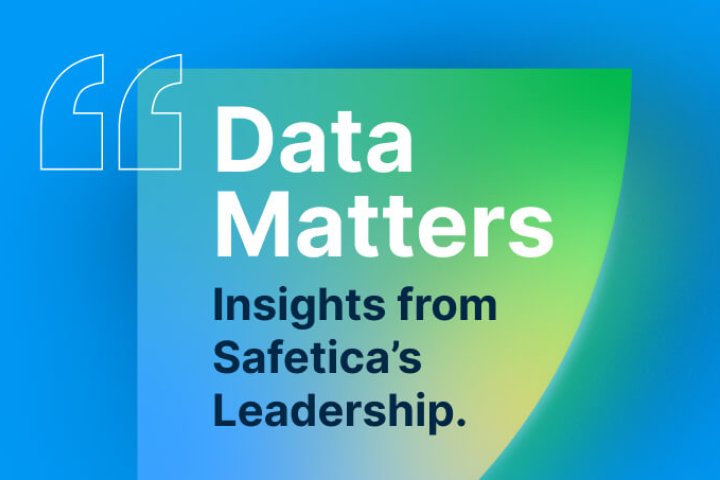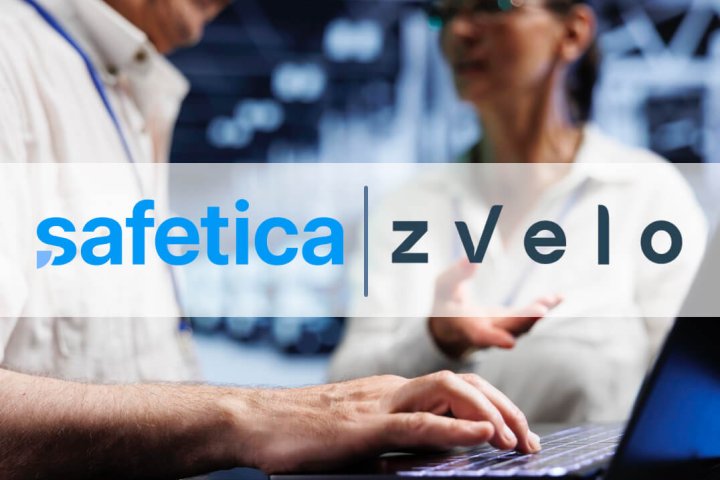As a decision-maker in the manufacturing industry, you may have reservations about the need for a dedicated Data Loss Prevention (DLP) solution. Perhaps you believe that your company doesn't handle sensitive data that would attract cybercriminals. Maybe you have confidence in your existing security measures. Or, you may be hesitant due to limited resources or because you think the risk level in your industry is relatively low.
In this article, we will give you valuable insights and actionable information that can help you make informed decisions about implementing DLP measures. We'll dive into the potential consequences of data breaches, the need to protect your supply chain, and the risks that come from insiders. By understanding all of these aspects, you'll see just how crucial DLP is in keeping your manufacturing business safe and secure.

Common cybercrimes in the manufacturing sector
Hackers are getting smarter and use sneaky techniques to target manufacturing systems. They break into networks, mess with data, disrupt operations, and generally cause havoc. So even if you don’t think it can happen to you, the manufacturing sector faces its fair share of cybercrimes, and you should be ready for them.
During a cyber attack, hackers can exploit vulnerabilities in your web applications, accessing critical systems and sensitive information stored in your internal networks and databases. They may use social engineering tactics to deceive your employees and gain access to confidential information, compromising your security.
Ransomware attacks pose another risk. In these situations, cybercriminals encrypt your important data and demand a ransom for its release. This can lead to costly payments, disruptions to your business operations, and potential harm to your reputation.
Phishing attacks specifically target your employees, using deceptive emails or messages to trick them into revealing sensitive information or downloading harmful attachments. These attacks provide hackers with a gateway into the organization's network, facilitating further malicious activities.
Furthermore, Distributed Denial of Service (DDoS) attacks can overwhelm your network and servers with excessive traffic, rendering them unusable. This type of attack can result in disrupted production, halted operations, and dissatisfied customers.
Now, let's explore the top 4 reasons why manufacturing companies should use DLP to combat these (and other) cyber threats.

Reason #1: Data and intellectual property protection
To keep your sensitive data safe and protect your valuable intellectual property, using DLP solutions is a must. Let's explore why it's a game-changer for your manufacturing business:
-
Shielding against data breaches
Think of DLP solutions as your digital fortress, working tirelessly to protect your valuable data from unauthorized access, leaks, or theft. By closely monitoring data movement within your organization, DLP ensures the safety of personal information, login credentials, and critical data.
Breaches can spell financial and reputational disaster, such as tampering with product specifications or exposing customer data to the wrong hands. A DLP can safeguard your business from the threats that lurk in the digital realm.
-
Safeguarding intellectual property
Your company's intellectual property is a priceless asset that sets you apart from the competition. DLP solutions provide an extra layer of protection, ensuring your trade secrets, know-how, and confidential information remain under lock and key. By preventing unauthorized disclosure or theft, DLP safeguards your intellectual property and prevents potential replication by competitors.
-
Bonus benefit: Ensuring business continuity
By identifying and neutralizing threats like DDoS attacks, DLP can ensure that your manufacturing processes run smoothly without any interruptions. This means you won't experience financial losses, your deliveries will stay on schedule, and you can maintain strong relationships with your customers. Business continuity becomes a natural side effect of comprehensive data protection.
Reason #2: Supply chain security and vendor risk management
A dedicated DLP solution is your ticket to mitigating risks from third-party vendors and suppliers. Here’s why it matters:
-
Navigating vendor-related risks
Manufacturing companies rely on vendors and suppliers to keep operations running smoothly. Imagine this: You collaborate with a trusted supplier who handles critical components for your product. But when you share sensitive data with them, there's always a risk of data breaches or unauthorized access. It's a concerning thought, right?
While DLP can't directly protect data at the vendor's end, they offer essential safeguards on your side. They use things like encryption and access controls to ensure that sensitive information remains protected during the data transfer process. This helps maintain the integrity and confidentiality of your valuable data, giving you peace of mind when working with vendors.
Read about the Zero Trust Approach. It could help you manage access to sensitive data in your company.
-
Strengthening vendor selection
By regularly evaluating vendors as part of your DLP efforts, you can find any weaknesses or risks they may have. This way, you can work together with the vendors to fix those issues and make sure they take data security seriously. This approach helps you choose and work with vendors who prioritize data protection, making it less likely for data breaches to happen within your supply chain.
-
Safeguarding supply chain integrity
DLP can act as your trusty guardian, establishing secure protocols for data exchange. Consider this situation: You're partnering with a logistics provider to transport your finished products to customers. If your systems are compromised, it could expose your shipment details, jeopardizing delivery schedules and even customer satisfaction. But with DLP, you can prevent this from happening.
How does it work? DLP uses techniques like data classification, encryption, and access controls. This means that only authorized individuals can access sensitive information. It adds an extra layer of protection to your supply chain and helps you manage the risks associated with your vendors.
By embracing DLP as a cornerstone of your supply chain security and vendor risk management strategy, you can not only prevent data loss but also actively contribute to building a secure and thriving manufacturing ecosystem.
Reason #3: Regulatory compliance
Besides protecting your business, you’ll also want to pay attention to your legal obligations. Besides general regulations like GDPR and CCPA (and, in the near future, NIS2 will affect some manufacturing companies as well), you could face specific industry standards like TISAX that you have to comply with.
But good news! DLP solutions for the manufacturing industry can be your trusty sidekick in achieving compliance.
Data protection software can help you identify and protect sensitive information, keep a detailed record of how data is handled, and even alert you in real time if there's a potential breach. This not only helps you comply with regulations but also saves you from hefty fines and legal troubles.
Reason #4: Protection from insider threats
Don't overlook the risks hiding within your own walls. Insider threats can put your manufacturing company in jeopardy, as revealed by Verizon's Data Breach Report. A surprising 12% of attacks come from within organizations! But fear not, DLP solutions are here to save the day and help you tackle insider risks head-on. Here how:
-
Incident response
When a data breach attempt or threatening incident occurs, DLP solutions are like investigators. They monitor data flows and user activities, quickly sniffing out any fishy or unauthorized behaviour.
In case of an incident, they provide you with valuable clues and evidence, making incident response a much simpler. DLP solutions like Safetica ONE can identify the source of the breach, provide real-time alters, and minimize any impact on your operations in a matter of minutes. Without a data loss prevention system in place, you might not even know about a potential threat until it's too late. But with DLP on your side, you can stay one step ahead.
-
User behaviour analytics
DLP solutions can also work as digital detectives. They use user behaviour analytics to spot abnormal or malicious activities from insiders. Safetica NXT utilizes auto-evaluation of risk and abnormal behaviour for a rapid response. Using smart algorithms and pattern recognition, the system establishes what's normal for each user and pinpoints any deviations that could be potential threats.
By analyzing user actions, DLP solutions can detect sneaky attempts to steal data or any odd behaviour that hints at an insider threat.
-
Real-time alerts
A good DLP solution can scan for policy violations, unauthorized data access attempts, and suspicious file transfers – all of that in real time. The moment anything suspicious happens, the system will alert you or your system administrator immediately. This way, you can swiftly respond and minimize the damage caused by insider threats. Real-time monitoring means you can stay one step ahead, detecting threats and intervening promptly.

How Safetica is already helping in the manufacturing industry
We understand that as business owners, managers, or administrators in the manufacturing industry, you may have reservations about implementing the right DLP solution for your company.
Would some concrete examples of Safetica’s experience helping manufacturing clients could help sooth your worries? Consider these success stories of companies that have embraced DLP to address their data security challenges.
Here are 3 instances where Safetica's DLP solutions have made a positive impact on manufacturing companies’ data security:

- Voltamp Transformers Oman SAOC: Voltamp is a manufacturer of transformers based in Oman. They switched from their previous DLP solution to Safetica due to its robust features that protect sensitive data like client lists, manufacturing processes, and R&D prototypes. Safetica brings them peace of mind and reduces their data security costs.
Read Voltamp Transformers Oman SAOC Case Study

- NAFFCO: NAFFCO is a leading manufacturer of firefighting equipment based in Dubai with over 15,000 team members and 2,000 engineers. NAFFCO needed an easy-to-install and manage DLP solution that performs security audits and prevents data from leaving the company. They chose Safetica for its simplicity, quick installation, and management. With Safetica, they have customizable reports, real-time incident alerts, and granular log access management.
Read NAFFCO Case Study

- Suntex Pte, Ltd.: With over 30 years of experience in apparel manufacturing, serving global sports brands, Suntex Pte, Ltd. understands the value of their data on product design, manufacturing processes, and customers. After replacing their previous DLP solution with Safetica, they witnessed a remarkable reduction in data security incidents.
Read Suntex Pte, Ltd. Case Study
With Safetica's DLP features and expertise, businesses have achieved data protection, reduced security incidents, and enhanced their overall data security management system. Don't let data security concerns hold you back – take a proactive step towards securing your manufacturing operations with Safetica's DLP solutions.
Next articles

The Age of Data: Why Cloud Growth Raises New Security and Ethics Risks
As cloud adoption surges, security and ethics struggle to keep up. Safetica’s CTO shares how organizations can manage risks in the era of data at scale.

